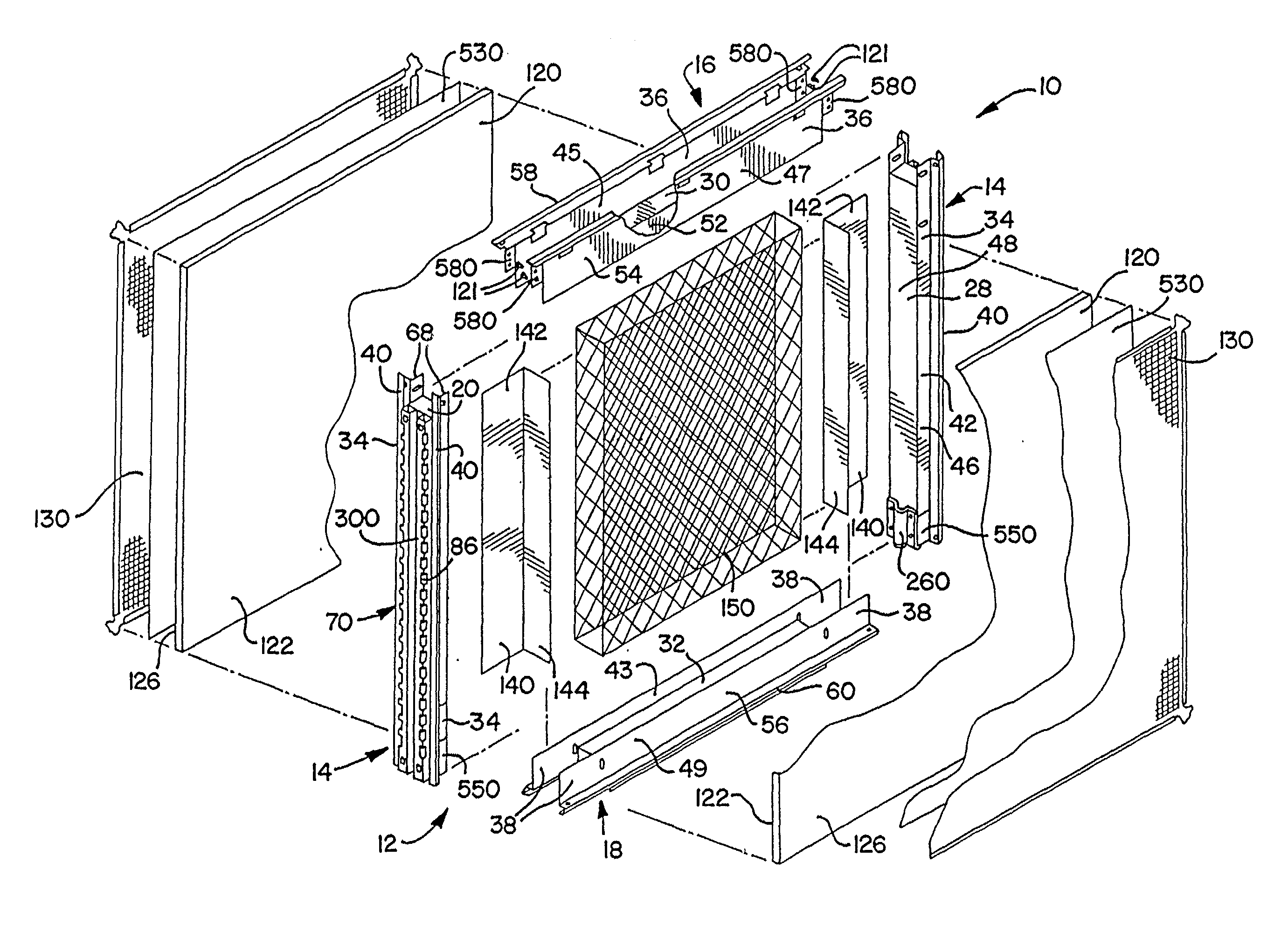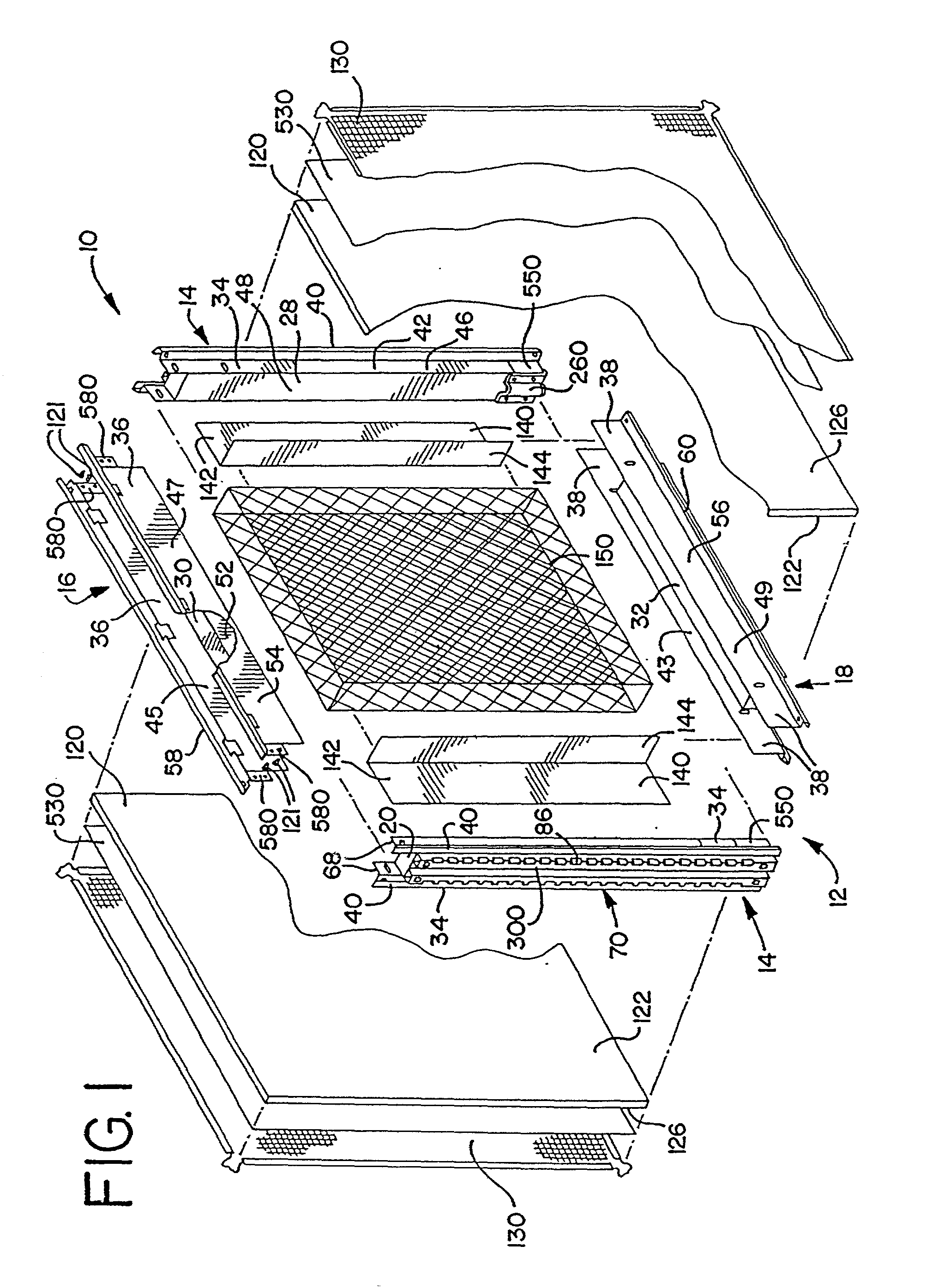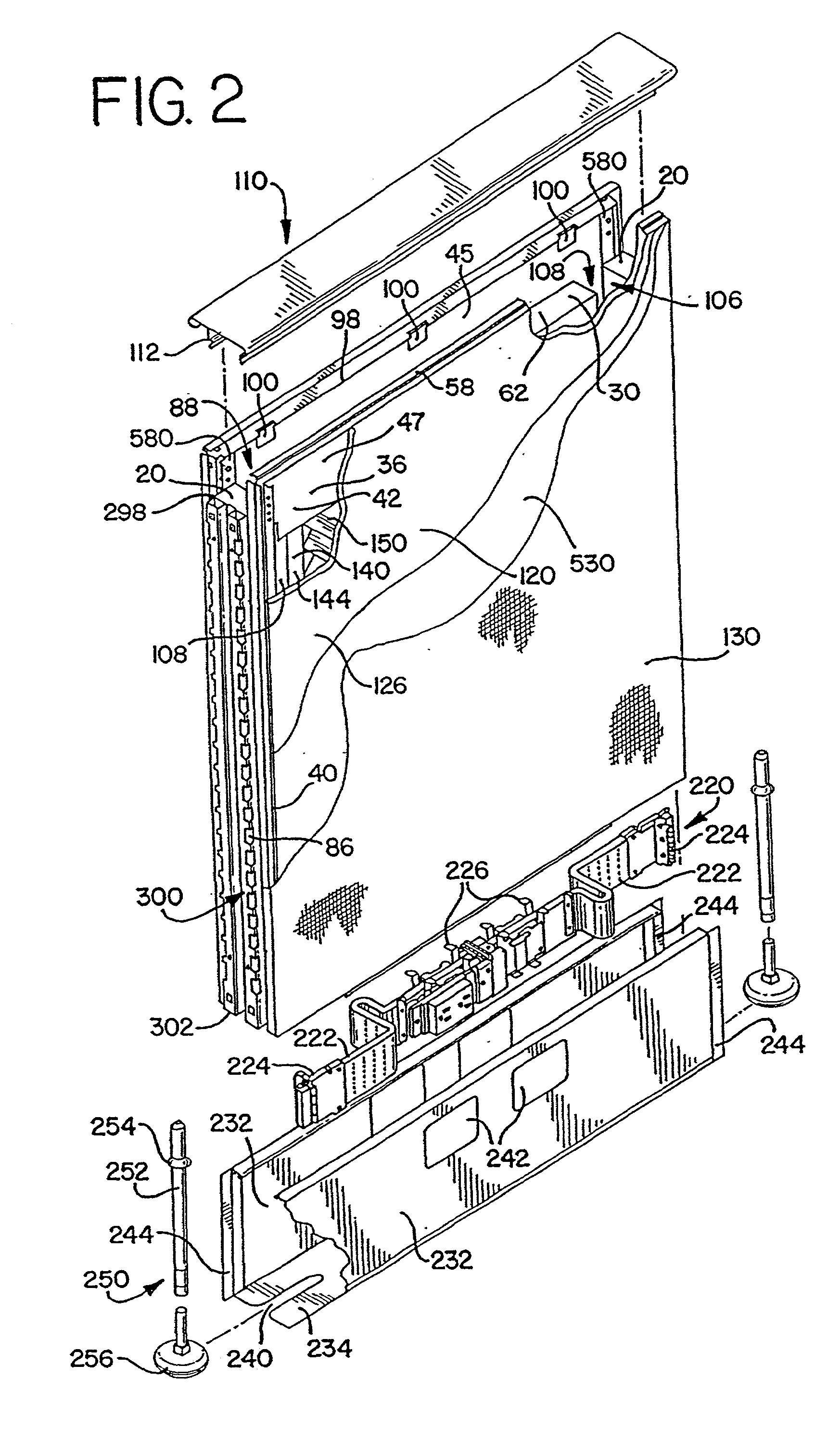Wall panel system
a wall panel and system technology, applied in the field of wall panel systems, can solve the problems of requiring excessive time and manpower, complex addition or removal of stackable upper wall panels, and requiring excessive amounts of time and manpower to effect the necessary or desired change, and achieves the effect of easy and quick reconfiguration, installation or removal quickly and easily, and minimal effor
- Summary
- Abstract
- Description
- Claims
- Application Information
AI Technical Summary
Benefits of technology
Problems solved by technology
Method used
Image
Examples
second embodiment
[0302] In a preferred embodiment, the strip 160 also includes a second hook member 166. In one embodiment, shown in FIG. 23, the second hook member 166 is positioned opposite of the first hook 164 and faces the same direction as the first hook member, i.e., opens inwardly away from the folded edge 133 of the fabric when it is folded over on itself. In a second embodiment, shown in FIG. 22, the second hook 168 is positioned at the end of the strip and opens outwardly away from the outer surface 136 of the fabric. In either embodiment, the second hook member 166, 168 is adapted to allow an installer to stretch tightly the fabric 130 while installing the first hook 164 on the outer leg 118 of the sidewall member.
[0303] To facilitate the installation of the fabric 130, a tool 170 is provided. The tool 170 includes a mounting block 171, a blade 172, a handle 174 and a housing 176 as shown in FIGS. 46-47. The mounting block 171 is mounted to the housing and includes a lip portion 173 adap...
first embodiment
[0385] Now referring to FIG. 80, a pair of lower wall panels are shown as attached to a corner post as described above. As described above, the corner post 320, in combination with one or more pairs of draw rods 296 and upper and lower draw blocks 280, 290, function as a connector member to connect the lower wall panels. A corner post extension 1120, shown in FIGS. 85 and 86, is then mounted to the top of the corner post, and can also be considered as part of the connector member. In a first embodiment, the corner post extension has the same construction as the corner post described above (with the same reference numbers calling out those aspects that are the same), except that the lower plate member 326 is mounted distally from the lower end of the extension. In addition, each side of the extension has a cut out 1126 along the lower end of the extension below the lower plate member. A leg portion 1128, formed as an L-shaped angled member, is welded in each corner of the extension a...
PUM
 Login to View More
Login to View More Abstract
Description
Claims
Application Information
 Login to View More
Login to View More - R&D
- Intellectual Property
- Life Sciences
- Materials
- Tech Scout
- Unparalleled Data Quality
- Higher Quality Content
- 60% Fewer Hallucinations
Browse by: Latest US Patents, China's latest patents, Technical Efficacy Thesaurus, Application Domain, Technology Topic, Popular Technical Reports.
© 2025 PatSnap. All rights reserved.Legal|Privacy policy|Modern Slavery Act Transparency Statement|Sitemap|About US| Contact US: help@patsnap.com



